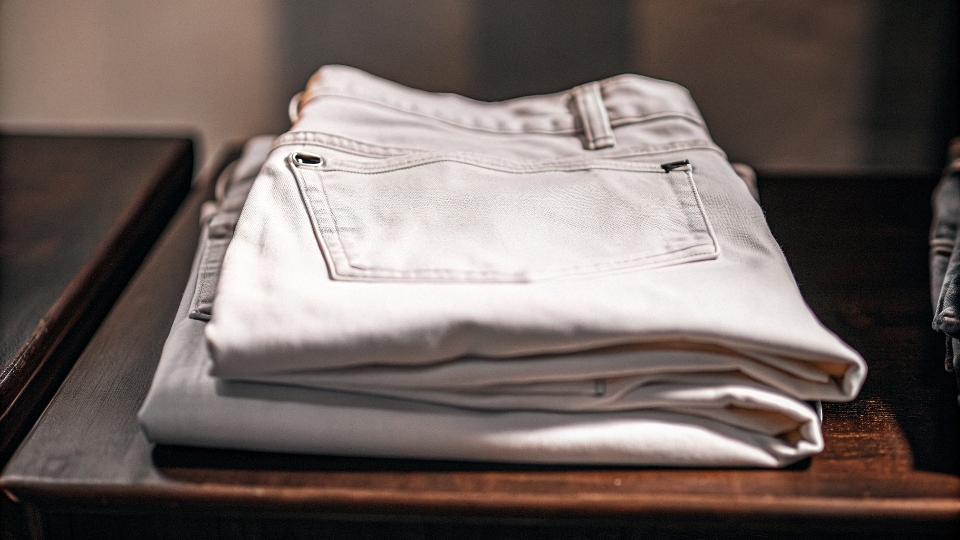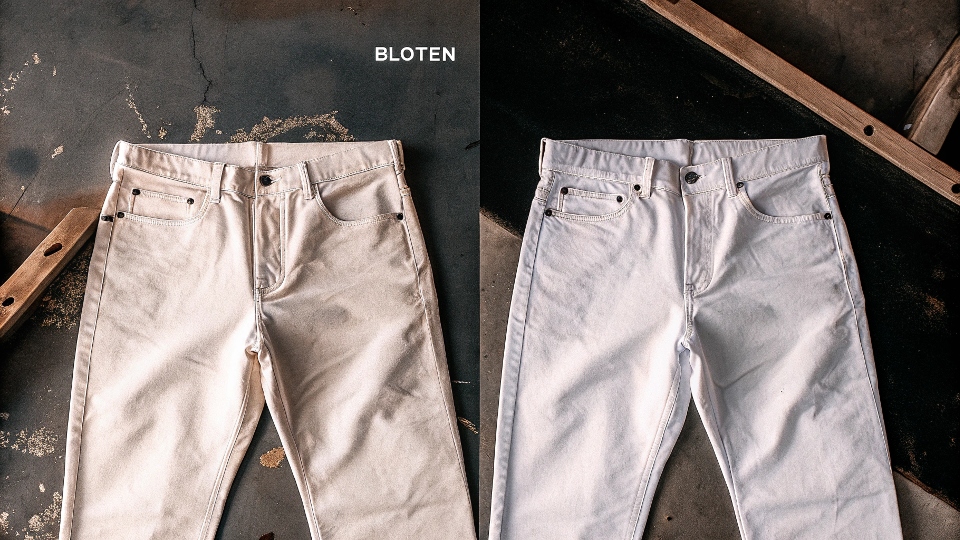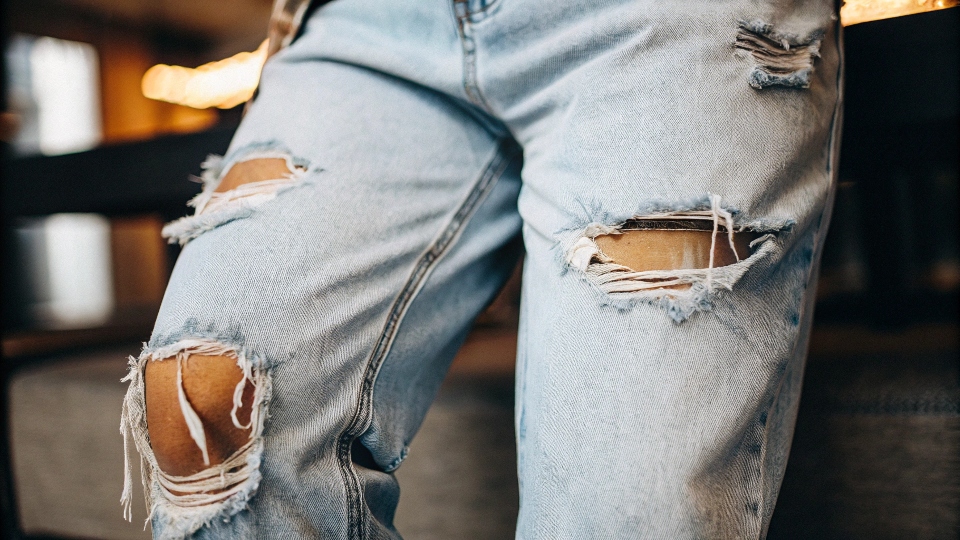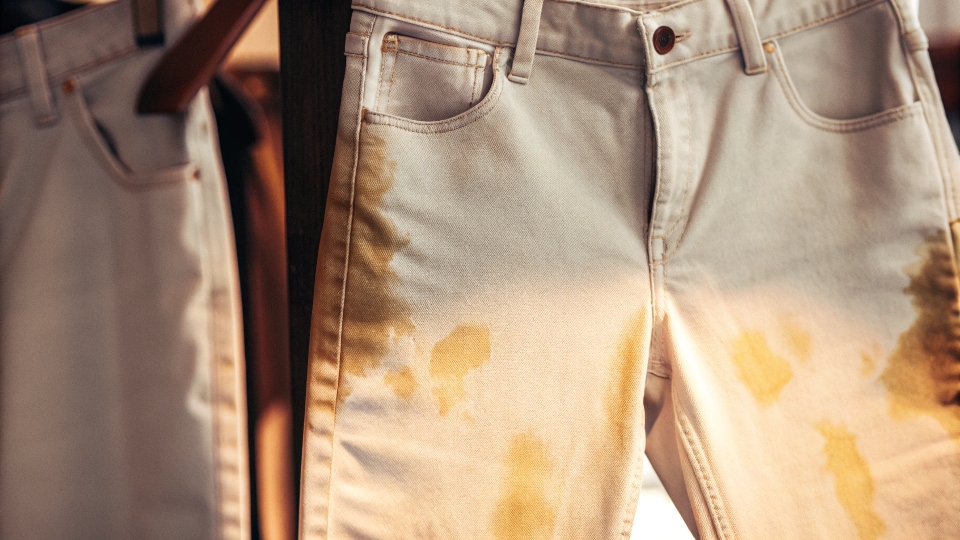You have a pair of dark jeans you want to transform into a crisp white. But you worry that bleach will just destroy the fabric or turn it a strange, murky color.
Yes, you can bleach jeans1 to make them white, but it is a harsh process. Success depends heavily on using diluted bleach on 100% cotton denim and rinsing perfectly to avoid fabric damage and yellowing.
In my two decades running a denim factory, I've seen countless bleaching experiments. Designers like Dean are always pushing for new finishes, and a perfect white is one of the hardest to achieve.
Some attempts turn out brilliant, while others are complete disasters that leave the fabric weak and yellowed.
The difference between success and failure is understanding the chemistry and respecting the fabric. Let's break down what really happens when you introduce bleach to denim.
Can You Really Bleach Denim to a Pure White?
You want a sharp, pure white finish for your jeans. But every time you try bleaching, you end up with a dingy, off-white shade or a patchy, uneven result.
Yes, you can bleach denim to white, but the fabric content is the most important factor. 100% cotton denim2 can get very close to white, while synthetic blends will likely remain off-white.
When a designer asks us to achieve an "optical white3" finish, the first thing we check is the fabric composition.
Chlorine bleach is very effective at chemically stripping the indigo dye from cotton, which is a natural cellulose fiber. However, if the denim is a blend, for example, 90% cotton and 10% polyester, the bleach will only affect the cotton.
Polyester is a type of plastic, and its color is locked into the synthetic fibers, so the bleach barely touches it.
This means you end up with white cotton threads woven with colored polyester threads, resulting in a heathered or off-white look.
To get the best result, you must start with 100% cotton fabric. The process itself requires care. We always use a diluted solution in our factory wash machines, ensuring the garment is fully submerged and tumbles freely for an even application.
| Bleach Type | Best Use Case | Expected Result on Blue Denim |
|---|---|---|
| Chlorine Bleach | Strong whitening, color removal | Can achieve near-white on 100% cotton |
| Oxygen Bleach | Gentle brightening, stain removal | Will only lighten the blue shade, not remove it |
Does Bleach Completely Ruin Your Jeans?
You grab a bottle of bleach, hoping to create a cool, faded look. But there's always a fear that you are one mistake away from completely destroying the pants.
Bleach can and will ruin jeans if you use it incorrectly. Applying undiluted bleach4 or soaking the jeans for too long dissolves the cotton fibers, causing holes and extreme weakness.
I've seen the aftermath of DIY bleach projects5 gone wrong.
A customer once brought me a pair of jeans that were literally falling apart. The bleach had eaten right through the fabric at the seams and knees.
You have to remember that bleach is a powerful chemical oxidizer. Its job is to break down chemical bonds, which is how it removes color.
But it can't tell the difference between a dye molecule and a cotton fiber molecule. Given enough time and concentration, it will break down both.
Undiluted bleach works so fast that it can create a hole in minutes. Even with diluted bleach, soaking for too long makes the entire garment brittle and prone to tearing.
In our factory, every bleaching process is timed to the minute, and we use neutralizing agents to stop the chemical reaction instantly. This control is what preserves the fabric's integrity.
Why Do White Jeans Turn Yellow After Bleaching?
You did it! You bleached your jeans to a nice white color. But after a wash or a day in the sun, they have developed an ugly, yellowish tint.
Yes, it's very common for bleach to turn white fabric yellow. This is caused by leftover bleach residue in the fibers reacting with sunlight, heat, or minerals in your water.
This is one of the most frustrating problems in denim finishing, and it's almost always caused by improper rinsing.
If even a tiny amount of chlorine bleach6 is left in the fabric, it will continue to oxidize slowly. When you expose the jeans to heat from a dryer or UV rays from the sun, this reaction speeds up and creates a distinct yellow color.
Another cause can be your water. If you have hard water7 with high iron content, the bleach can react with the iron particles, essentially depositing a thin layer of rust onto your clothes. To prevent this, you have to be extremely thorough.
After bleaching, rinse the jeans multiple times in cold water. In the industry, we use a chemical neutralizer8 to be certain, but at home, a final rinse with a bit of white vinegar can help.
Then, wash the jeans alone with a mild detergent and, most importantly, let them air-dry in the shade9.
What Color Do Blue Jeans Actually Turn When You Bleach Them?
You expect the process to be simple: blue jeans plus bleach equals white jeans. But as you watch, the color changes slowly and seems to get stuck at a weird intermediate shade.
Blue jeans don't turn white immediately. They fade through several color stages, starting with light blue, moving to a cream or off-white, and finally reaching a near-white after prolonged soaking.
The bleaching process is a gradual removal of indigo dye, not an instant transformation. The final color is all about timing. In our factory, we have precise "recipes" to achieve specific levels of fading. Here is a general guide to what you can expect:
-
Stage 1: Light Blue (10–30 minutes)
The bleach starts by stripping the outer layer of indigo from the yarn. This creates a classic faded or sky-blue look. This is the stage used for many vintage and acid-wash styles. -
Stage 2: Cream or Off-White (30–60 minutes)
As the soaking continues, most of the blue dye is gone. However, the natural color of the cotton fiber, which is a creamy, yellowish color, starts to show through. This is where many DIY projects end up if the process is stopped too early. -
Stage 3: Near-White (1+ hour)
With a longer soak in a properly diluted solution, the bleach will whiten the natural cotton fiber itself. It is very difficult to achieve a pure, "optical" white with bleach alone, but you can get very close. This stage also carries the highest risk of damaging the fabric.
Conclusion
Bleaching can transform jeans, but it demands respect for the material. Achieving a true white is possible, but it requires the right fabric, precise control, and thorough rinsing to avoid damage.
-
Explore this link to learn the best techniques for successfully bleaching jeans without damaging the fabric. ↩
-
Understanding the significance of fabric composition can help you achieve the best bleaching results. ↩
-
Discover the concept of optical white and how it relates to achieving the perfect denim finish. ↩
-
This resource will guide you on the correct dilution ratios to prevent fabric damage. ↩
-
This link highlights common pitfalls in DIY bleaching, helping you avoid costly errors. ↩
-
Discover how chlorine bleach works on denim and why it's effective for achieving a white finish. ↩
-
Understanding the impact of hard water can help you avoid unwanted results when bleaching. ↩
-
Explore the role of chemical neutralizers in preserving fabric integrity during bleaching. ↩
-
Learn the importance of drying techniques to maintain the color and quality of bleached jeans. ↩





[^10]: dark blue, sky blue, cream, and near-white](https://diznewjeans.com/wp-content/uploads/2025/10/blue-jeans-don-t-turn-white-immediately-they-fa.jpg)





